What does 7 mean in recycling? (Solved and Explained For You)
When you buy any item made of plastic, you’ll discover that it has a resin code, the number in the middle of a small triangle made from chasing arrows. Most people assume the chasing arrows sign shows the plastic is recyclable. However, the number stamped within the triangle is what matters most since not all plastics are recyclable or reusable.
Plastic number 7 is any type of plastic that’s sometimes recyclable and sometimes not. It usually contains multiple plastics, some of which aren’t recyclable. Those with the “PLA” initials or the word “compostable” near the recycling symbol are recyclable.
Plastics with the 7 symbol usually fall under the category of other plastics, so anything that’s not classified under plastics 1 to 6 falls under this category. The rest of this article will analyze the complex nature of plastic 7 and other related topics.
Recycling Symbol 7, What Does It Mean?
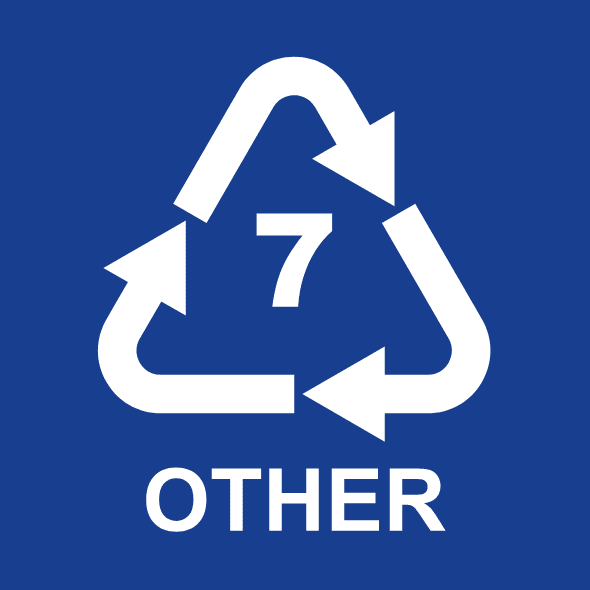
All plastics have the recycle symbol with a number at the centers. The symbol is a guide to help consumers understand the product better and know whether the plastic is recyclable or safe for use. Plastics number 1 to 6 can be recycled. However, plastic 7 is more complex.
The plastic number 7 symbol has different meanings, showing the product is recyclable, non-recyclable, or biodegradable. If it has PLA and compostable next to 7, the product is recyclable and biodegradable plastics. Plastics with only 7 are non-recyclable and shouldn’t be in recycle bins.
Curbside recycling bins can’t recycle number 7 plastics unless they have the symbol PLA or the word compostable written next to the recycle symbol. When you buy plastic with the 7 symbol, you’ll need to find other ways to dispose of it. Likewise, recyclers will know that the cost of recycling 7 may be too high or the plastic is too hard or delicate to recycle.
Is Number 7 Plastic Recyclable?
Number 7 plastics often fall under the miscellaneous category, where anything goes. For years, plastics with resin code 7 weren’t recyclable. This is one of the reasons it isn’t recycled much. Today, the recyclers that recycle number 7 plastics use modern, high rate composting which is costly to run.
Number 7 plastics are recyclable and non-recyclable. Plastic 7 is made up of a range of plastics, and some are recyclable while others aren’t. Only plastics number 7 with the initials PLA or the word compostable written next to the recycle sign are recyclable, but only a limited number of times.
Some recyclable plastics labeled 7 can be recycled into custom-made products and plastic lumber. However, since these plastics are traditionally considered non-recyclable, local providers may not be willing to take them back.
This YouTube video analyzes the different resin codes, what they mean, and if they should be recycled (plastic 7 at 2’53”):
This Plastic Can Be Found in Items Like:
Items that fall under plastic number 7 are made from Polycarbonate, polylactic acid (PLA), nylon, acrylic, melamine, and Acrylonitrile Butadiene Styrene (ABS). These plastics have unique properties that make them recyclable, non-recyclable, or biodegradable.
Most plastics in this category include 3- and 5-gallon (11.36 and 18.93 L) water bottles, iPods, DVDs, signs and displays, nylon, food containers, and bullet-proof material.
Plastic 7 and types of plastic
Let’s dive into each plastic type and see the items made with them:
Polycarbonate (PC)
Polycarbonate is a glass-like translucent plastic. Unfortunately, PC isn’t used much these days because this plastic is associated with large quantities of bisphenol A (BPA), an industrial chemical associated with plastics and resin.
Fortunately, most manufacturers label BPA-free plastics. Polycarbonate is rarely used in items used for storing food and drinks. However, some plastic bottles and dishes are made from PC, but they come with conditions. They include no microwaving or washing with hot water. Heat breaks down BPA causing it to leak into your food and drinks.
Some of the items made of Polycarbonate are:
- Bullet-proof glass
- Eyewear
- Car parts, like the dashboards, sunroofs, headlamps
- Greenhouses
- Medical equipment, like oxygenators and dialysis machines
- CDs and DVDs
- Roofing Sheets
- Medical storage containers
- 3D Printing applications
- Protective gear
- Exterior lighting fixtures
- Baby bottles
Polylactic Acid (PLA)
Plastic number 7 items with the PLA sign are recyclable. Polylactic acid is a biodegradable plastic made from sugar cane or corn starch. Its properties are similar to plastic numbers 1 and 5.
They’re lightweight, chemically stable, and molded to different shapes and sizes. They also have good impact resistance, don’t rust, are insoluble in water, and are transparent.

These characteristics make PLA suitable for making a range of products, including:
● Storage containers
● Takeaway utensils
● Home 3D printing applications
● Implants
● Rods
● Screws
● Disposable cups and plates
Acrylonitrile Butadiene Styrene (ABS)
ABS is a lightweight, strong, and highly resistant plastic that’s relatively cheap to produce. Some filaments for 3D printing are made from ABS because it melts at a low temperature.
Besides filaments, other items made from ABS include computer keyboards, lego bricks, household appliances, such as vacuum cleaners and food processors, toys, automotive bumpers, and golf club heads.
Nylon (PA)
Nylon is strong, heat resistant, and compatible with various chemicals. It’s a synthetic polymer whose heat-resistant status makes it ideal for molding that requires very high temperatures.
Some of the items made from this plastic include clothes, thread, rope, and rubber reinforcement. And since it’s highly durable and resistant to pressure and chemical abrasions, it replaces metal in many applications, such as car engine parts.
Acrylic (PMMA)
Acrylic is a popular plastic recently used in various items, including photo frames, cardholders, display stands, shelves, aquariums, and glasses. Acrylic is scratch-resistant, transparent, and a great replacement for glass since it doesn’t shatter.
Tritan
Tritan is a copolyester plastic that’s BPA safe. Unfortunately, this plastic has had its share of controversy. Tritan plastic came into the market in 2007, and since it was marketed as BPA – free, it became a hit.
Tritan plastics are tough, clear, chemically resistant, dishwasher safe, and withstand high temperatures. Some of these properties, including its BPA-safe status, made Tritan popular.
A Tritan court case over estrogenic chemicals drew more attention to BPA and other chemicals found in plastics.
Eastman, the producers of Tritan, won the case. Today, Tritan is one of the plastics with the 7 label. Some of the items made from Tritan include water bottles and food storage containers.

Melamine
Melamine is another material under the plastic number 7 category. It’s non-recyclable and is usually used for making food containers. It’s a durable container that’s dishwasher safe.
Melamine can’t be recycled because it falls under thermoset plastics. These plastics don’t melt again, and the only way to get rid of them is by burning them.
This YouTube video explores the different types of plastics and their use:
How and Where To Recycle It?
Plastics that fall in the number 7 category are complex. Some local authorities don’t allow number 7 plastics to go with others in curbside recycling bins. Some of the plastics have unique recycling conditions and the recycling protocols for plastic number 7 aren’t standardized.
Plastics made from polycarbonates don’t degrade easily. Unfortunately, the risk of BPA leaking into the environment makes the disposal method of PC plastics critical. Items made from PC plastics and ABS are recyclable, but only by recyclers who specialize in these types of plastic.
You shouldn’t put Bio-based plastics, such as polylactic acid (PLA), in regular recycling bins. They can easily be mistaken for High-density polyethylene (HDPE). Plus PLA has different recycling methods, and they’re not recyclable with other plastics.
Instead, you should send PLA to commercial composting facilities. Some authorities accept plastic number 7 for curbside recycling. However, you should first check with them to make sure it’s the recyclable type.
What Is Plastic 7 Recycled Into?
Number 7 plastics are made up of a range of materials, including polycarbonates, acrylics, styrene, polylactide, fiberglass, nylon, and acrylonitrile butadiene. Polycarbonates, labeled PC, are the most common. Some plastics labeled 7 are made from a mixture of materials that are difficult to recycle, while others cannot be reused.
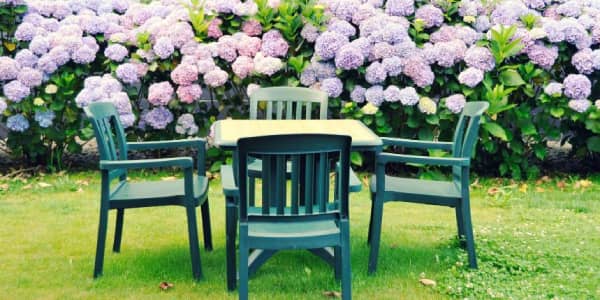
Plastic 7 is recycled into pipes, plastic timber, and outdoor furniture. Plastics labeled 7 are not usually recycled. Some recyclers even warn against mixing number 7 plastics with others in curbside recycle bins. Areas where plastic 7 are accepted for recycling have a designated bin.
Unfortunately, plastic number 7 doesn’t have any fixed recycling regulations. Instead of recycling, most recycling plants dispose of them, usually by burning them. This is what happens to most plastics with resin code 7.
Is It a Good Idea To Reuse a Plastic Made of Plastic 7?
The challenge with number 7 plastics is sometimes it is difficult to determine what kind of plastic it is, whether it is reusable or even recyclable. This is why most plastics labeled 7 are used once and discarded.
It’s not a good idea to reuse plastic number 7 because it comprises all kinds of plastic. Some of them, such as those labeled PLA compostable, are reusable. But because identifying BPA-safe number 7 plastics isn’t easy, it’s best to treat all of them as non-reusable.
To be safe, it’s best to avoid plastics with 7, but if it’s unavoidable, you shouldn’t reuse the plastic.Regular use of plastic 7, especially for food, increases the risk of BPA leaching into your food and compromising your health.
Is Plastic Number 7 Safe for Food?
The debate on the dangers of keeping water and food in plastics has been ongoing for a long time. Plastic 7 is the only type that appears in both the safe and unsafe categories, and this can be a little confusing.
Plastic number 7 is safe and unsafe for food. Some plastics under this category release toxins, such as BPA. These toxins can leak into foods and drinks and are harmful to human health. Some plastics, especially those labeled PLA or compostable, are safe, and can be reused for a limited period.
If you’re not sure whether the number 7 plastic is safe for food, it’s best to avoid using it, especially if you’ll expose it to heat.
Is Number 7 Plastic Microwave Safe?
Some plastic food packages fall under the number 7 plastics. So, it’s natural for you to wonder if you can use it in the microwave. Fortunately, plastics that are microwave safe are listed as such. Unfortunately, number 7 plastics are some of those unsuitable for the microwave.
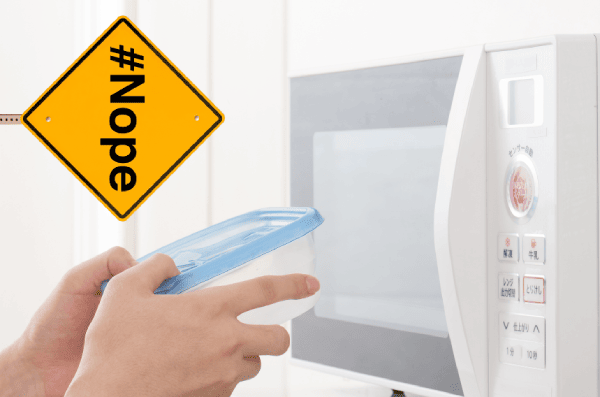
Plastic number 7 isn’t microwave-safe. If exposed to heat, they’ll release toxins. Some others, such as styrofoam and polystyrene, will melt if you put them in the microwave. The number 7 plastics used for food packaging are BPA safe but it is best to transfer your food to a plate for microwaving.
The plastics considered microwave safe are 1, 2 and 5. The rest, including plastic number 7 are not. However, you are still required to exercise caution when using plastic to microwave your food. If you can avoid placing plastics in the microwave entirely, that is best. Microwaving plastics causes toxins to get into your food.
Conclusion
Before placing any plastic container in a recycle bin, you must check the resin code. Plastic 7 is generally seen as non-recyclable unless labeled PLA and compostable. Plastic number 7 can contaminate other types of plastics when recycled together. Some plastics labeled 7 contain BPA toxins, so you also need to determine how safe it is before using them to store your food.
Sources
- Everday Recycler: Plastic Numbers – No 7 – All Other Plastics
- National Geographic: 7 Things You Didn’t Know About Plastic (and Recycling)
- Mother Jones: The Scary New Evidence on BPA-Free Plastics

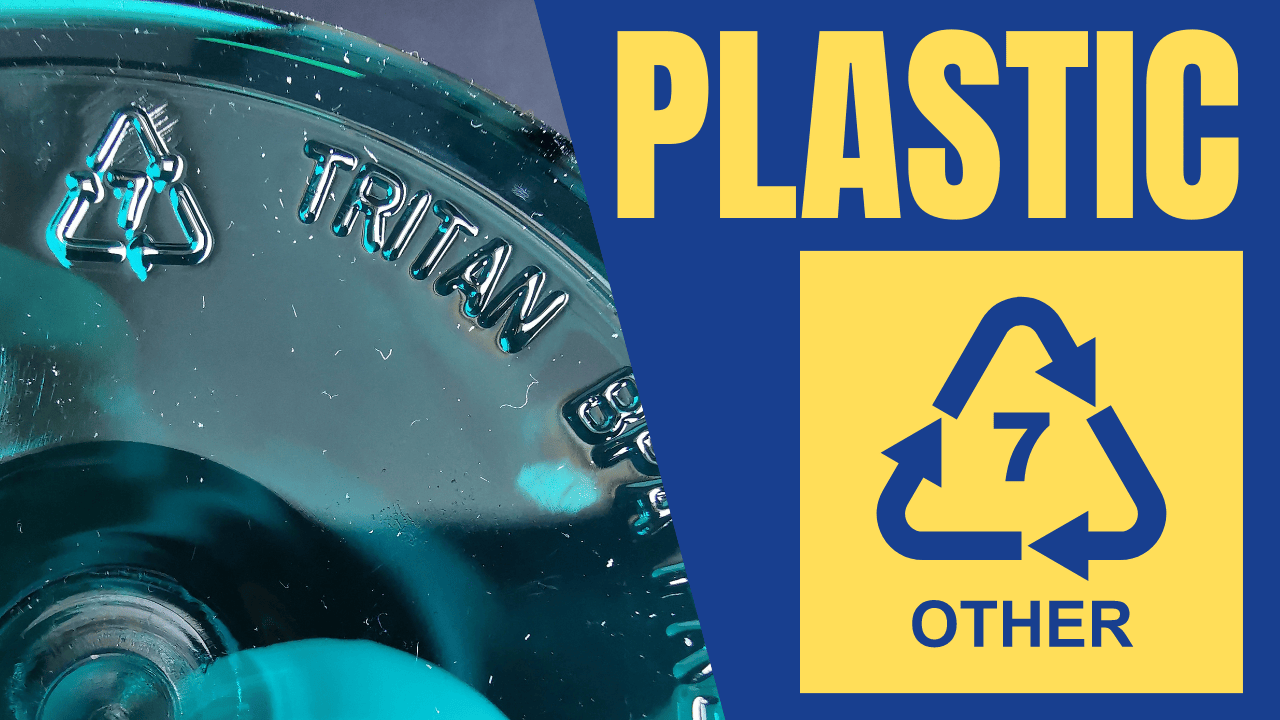
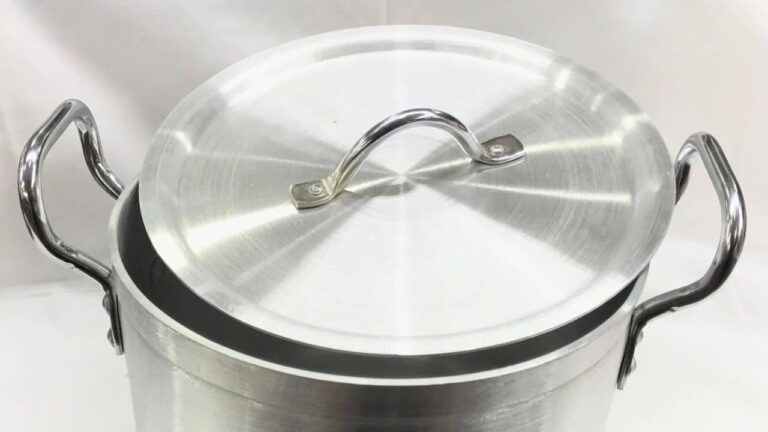
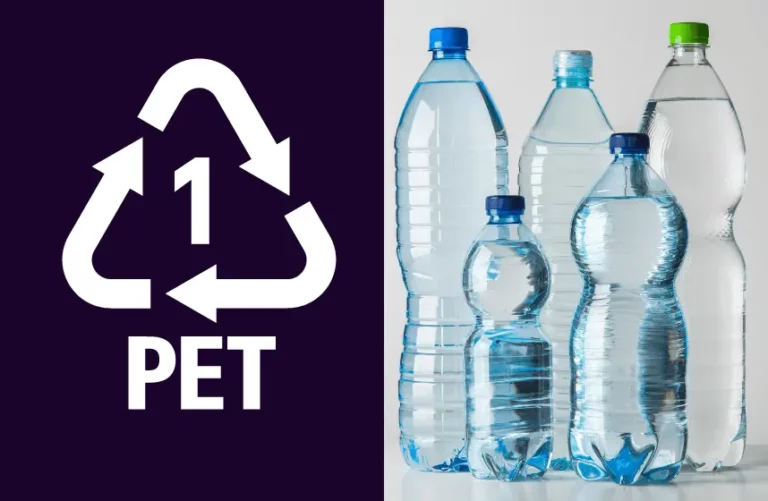
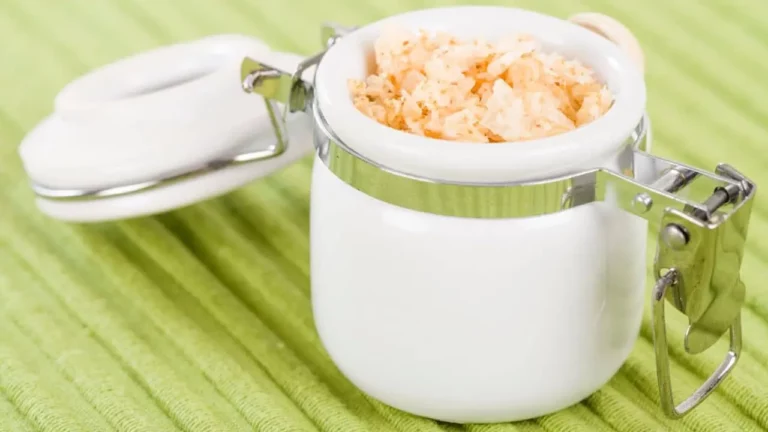
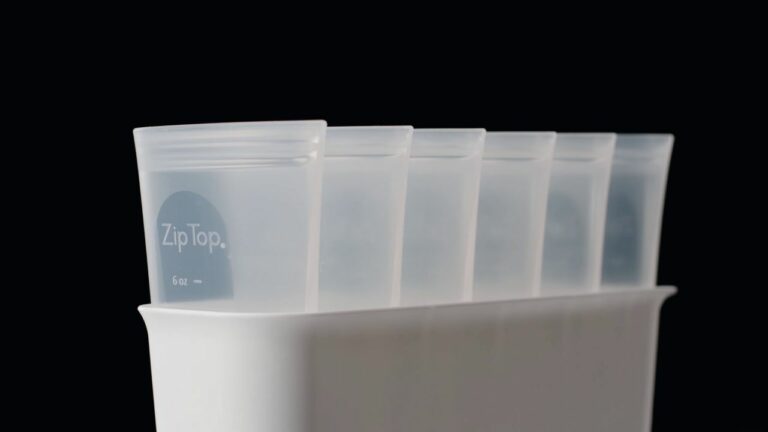
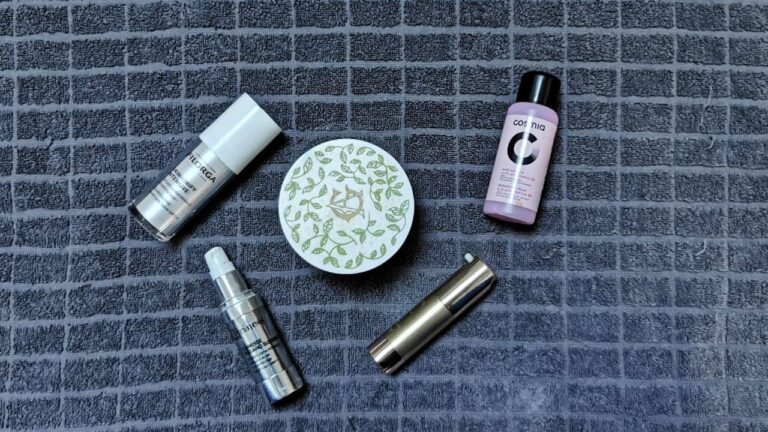
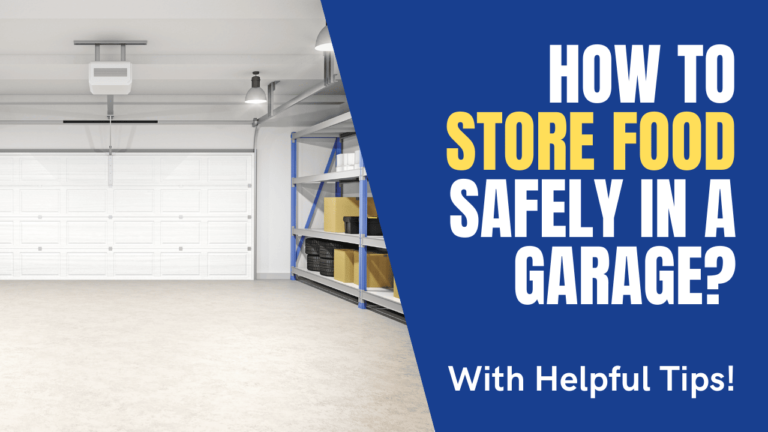
I have an article with the number 7 in the triangle and also TPE printed below it.
Just wondering it there is anyplace near Stratford Ontario that will pick this up free of charge for recycling purposes. Really do not want to put this in the garbage dumpster and have it sent to the landfill site.
Please advise
Here’s a link to help you: https://www.stratford.ca/en/live-here/recyclingcollection.aspx and phone number : 519-271-0250.